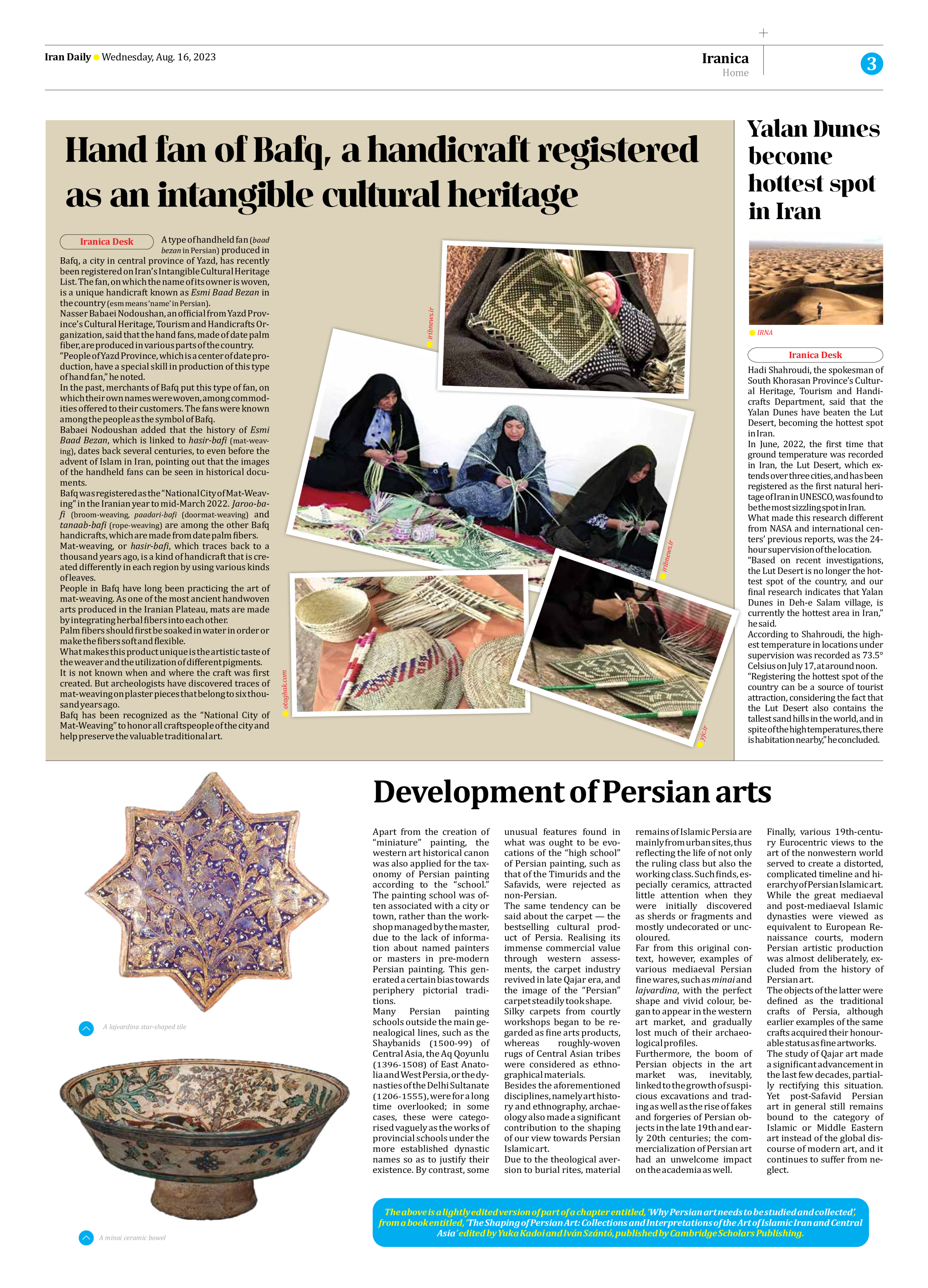
Hand fan of Bafq, a handicraft registered as an intangible cultural heritage
A type of handheld fan (baad bezan in Persian) produced in Bafq, a city in central province of Yazd, has recently been registered on Iran’s Intangible Cultural Heritage List. The fan, on which the name of its owner is woven, is a unique handicraft known as Esmi Baad Bezan in the country (esm means ‘name’ in Persian).
Nasser Babaei Nodoushan, an official from Yazd Province’s Cultural Heritage, Tourism and Handicrafts Organization, said that the hand fans, made of date palm fiber, are produced in various parts of the country.
“People of Yazd Province, which is a center of date production, have a special skill in production of this type of hand fan,” he noted.
In the past, merchants of Bafq put this type of fan, on which their own names were woven, among commodities offered to their customers. The fans were known among the people as the symbol of Bafq.
Babaei Nodoushan added that the history of Esmi Baad Bezan, which is linked to hasir-bafi (mat-weaving), dates back several centuries, to even before the advent of Islam in Iran, pointing out that the images of the handheld fans can be seen in historical documents.
Bafq was registered as the “National City of Mat-Weaving” in the Iranian year to mid-March 2022. Jaroo-bafi (broom-weaving, paadari-bafi (doormat-weaving) and tanaab-bafi (rope-weaving) are among the other Bafq handicrafts, which are made from date palm fibers.
Mat-weaving, or hasir-bafi, which traces back to a thousand years ago, is a kind of handicraft that is created differently in each region by using various kinds of leaves.
People in Bafq have long been practicing the art of mat-weaving. As one of the most ancient handwoven arts produced in the Iranian Plateau, mats are made by integrating herbal fibers into each other.
Palm fibers should first be soaked in water in order or make the fibers soft and flexible.
What makes this product unique is the artistic taste of the weaver and the utilization of different pigments.
It is not known when and where the craft was first created. But archeologists have discovered traces of mat-weaving on plaster pieces that belong to six thousand years ago.
Bafq has been recognized as the “National City of Mat-Weaving” to honor all craftspeople of the city and help preserve the valuable traditional art.







